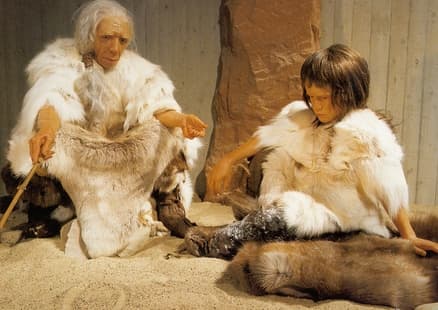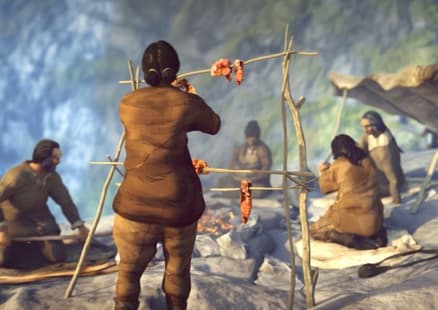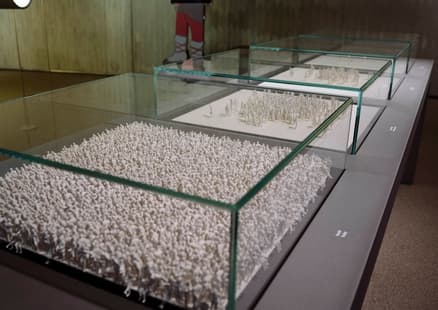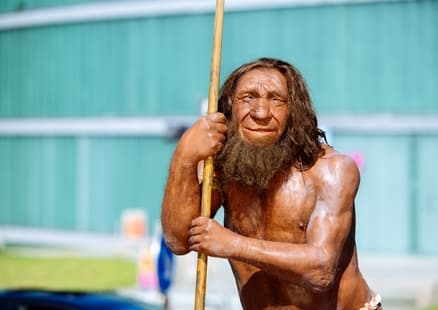What makes us social beings – and how did language originate in the first place?
In the seventh section of the Neanderthal Museum exhibition, you will learn why communication is more than just words, how early humans lived in groups, and why cooperation was our strongest evolutionary advantage. From the first sounds to shared childcare to a global society.

Early hominins used gestures and sounds - until language emerged. Language was the key to passing on knowledge. The complex tools and hunting strategies of Neanderthals could only have been developed with the help of language.

Language itself leaves no traces. However, its biological prerequisites - brain size, hyoid bone, FOXP2 gene - can be traced using scientific methods.

In relation to the body, the human brain is exceptionally large - and energy-hungry. It is the biological basis for language, planning, memory, and cultural development. The brain became the platform for abstract ideas, community spirit, and symbolic thinking - a decisive step on the path to today's society.

Human babies are born immature. This made cooperation necessary - even for Homo erectus. Parents, grandparents, and group members worked together to care for the young.

Grandmothers as a form of “social innovation” supported young mothers - a model that has survived in many cultures to this day. If you want to learn more about motherhood among Neanderthals, take a look at our new special exhibition.

In the Stone Age, people lived in small groups of about 25 individuals. These structures were the seeds of culture, cooperation, and the passing on of traditions. Today, there are countless models of cohabitation around the world - from extended families to blended families. But the principle of community remains the same.

With the advent of settled life 10,000 years ago, humanity grew rapidly. Cities sprang up, new social rules became necessary - and new challenges arose: epidemics, inequality, resource scarcity. The trend continues: the world's population is growing. How we will live together in the future is becoming one of the most important questions of our time.

Then visit the Neanderthal Museum in Mettmann!
Immerse yourself in the world of the first words, group structures, and social inventions—and discover how communication became the foundation of our culture.